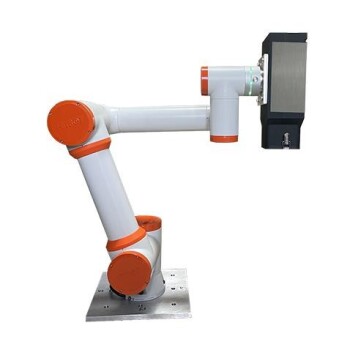The main test for an element involves various analytical techniques that determine the presence, concentration, and sometimes the state of elements within a sample.
These techniques are crucial in numerous scientific fields, including chemistry, materials science, environmental testing, and food testing.
The choice of method depends on the specific requirements of the analysis, such as sensitivity, accuracy, sample type, and the elements of interest.
Key Points Explained:

1. Definition and Importance of Element Analysis
Definition: An element is a general term for atoms of the same type with the same number of protons.
Importance: Element analysis is essential for identifying the elemental composition of substances, which is crucial for research, quality control, and compliance purposes.
2. Common Element Analysis Techniques
Inductively Coupled Plasma Mass Spectrometry (ICP-MS)
Principle: Ionizes sample components to generate ions with different charge-to-mass ratios, which are then analyzed by a mass spectrometer.
Features: High sensitivity, wide mass measurement range, and high resolution.
Atomic Absorption Spectroscopy (AAS)
Principle: Based on the phenomenon that gaseous atoms can absorb light radiation of a certain wavelength.
Features: High sensitivity, good selectivity, and simple operation.
Atomic Emission Spectroscopy (AES)
Principle: Utilizes the emission of light from atoms excited to higher energy states.
Features: High temperature, good detection limit, and small matrix effect.
X-ray Fluorescence Spectroscopy (XRF)
Principle: Excites elements in the sample to emit secondary X-rays, which are then measured to determine elemental composition.
Features: Non-destructive, good for qualitative and quantitative analysis, and requires minimal sample preparation.
3. Comparison of Techniques
Sensitivity and Detection Limits
ICP-MS offers the highest sensitivity and lowest detection limits.
AAS and AES also provide high sensitivity but are generally less sensitive than ICP-MS.
Sample Preparation and Destructiveness
XRF is non-destructive and requires minimal sample preparation.
ICP-MS and AAS often require more extensive sample preparation.
Applicability and Versatility
ICP-MS and XRF are versatile and can analyze a wide range of elements.
AAS and AES are more specialized and may be limited in the number of elements they can analyze.
4. Applications in Different Fields
Environmental Testing
Techniques like ICP-MS and XRF are used to analyze pollutants and trace elements in environmental samples.
Materials Science
AES and XRF are used to determine the composition of alloys and other materials.
Geology and Mining
Handheld XRF analyzers are used for on-site analysis of ore samples to determine elemental composition and guide mining operations.
5. Challenges and Considerations
Cost and Accessibility
Traditional methods like ICP-MS and AAS require specialized equipment and trained personnel, making them expensive and less accessible.
Sample Destruction
Some methods, like AAS, may require sample destruction, which is not always practical or desirable.
Portability and Field Use
Handheld XRF analyzers offer the advantage of portability, allowing for on-site analysis without the need for extensive laboratory setup.
In conclusion, the main test for an element involves a variety of analytical techniques, each with its own strengths and limitations.
The choice of method depends on the specific requirements of the analysis, including sensitivity, accuracy, sample type, and the elements of interest.
Techniques like ICP-MS, AAS, AES, and XRF are widely used in various scientific fields for their ability to provide detailed and accurate elemental analysis.
Continue exploring, consult our experts
Discover the precision of KINTEK SOLUTION's analytical instruments, designed to revolutionize your element analysis.
With cutting-edge techniques like ICP-MS, AAS, AES, and XRF, our equipment ensures unparalleled sensitivity, accuracy, and versatility.
Elevate your research and compliance efforts by harnessing our state-of-the-art solutions.
Don't miss out on the opportunity to enhance your lab's capabilities.
Contact KINTEK SOLUTION today and unlock the potential of precise elemental analysis.













